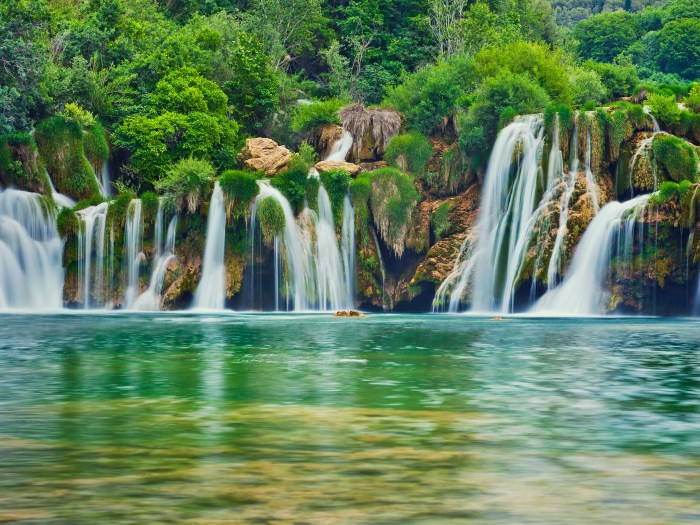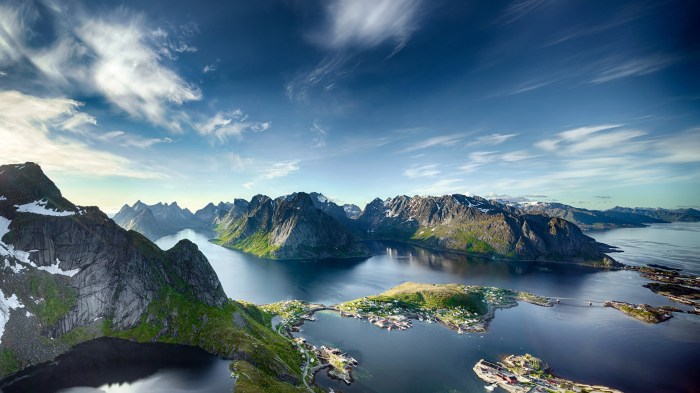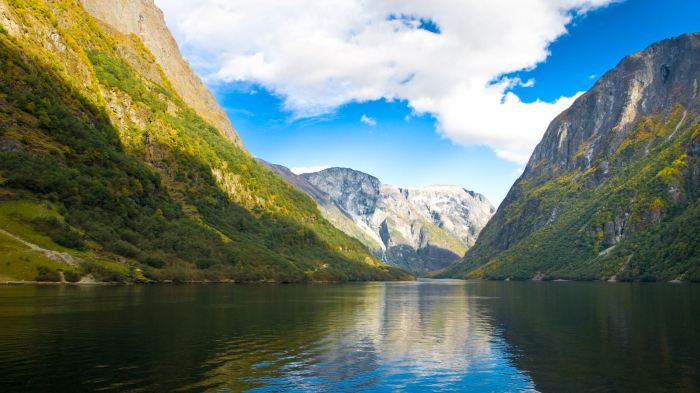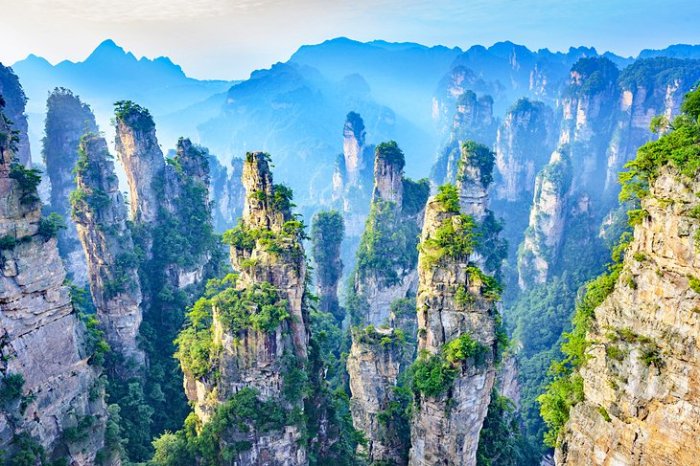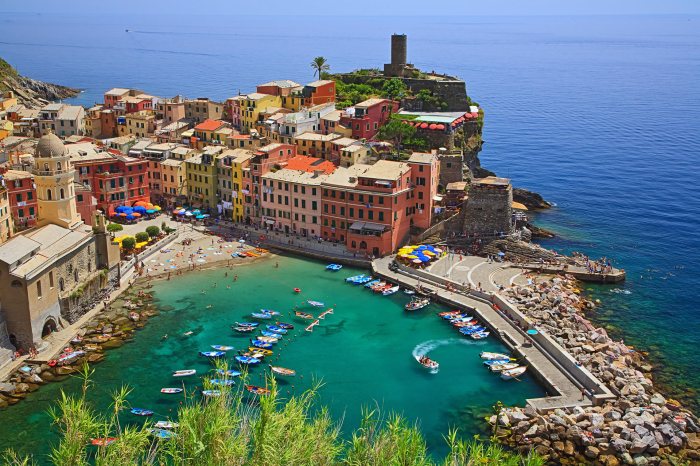Top 10 Places To Visit In Scotland
Top 10 Places To Visit In Scotland: From the rugged Highlands to the bustling cities, Scotland offers a diverse and captivating experience for every traveler. Whether you’re seeking ancient history, breathtaking landscapes, vibrant culture, or a taste of the finest whisky, this land of legends has something for everyone.
This list delves into the top ten must-see destinations in Scotland, exploring each region’s unique offerings, from the majestic mountains and lochs of the Highlands to the historic castles and bustling cities of Edinburgh and Glasgow. We’ll uncover the mysteries of Loch Ness, journey through the ancient history of the Orkney Islands, and experience the vibrant culture of the Scottish Borders.
Get ready to immerse yourself in the magic of Scotland!
The Majestic Highlands
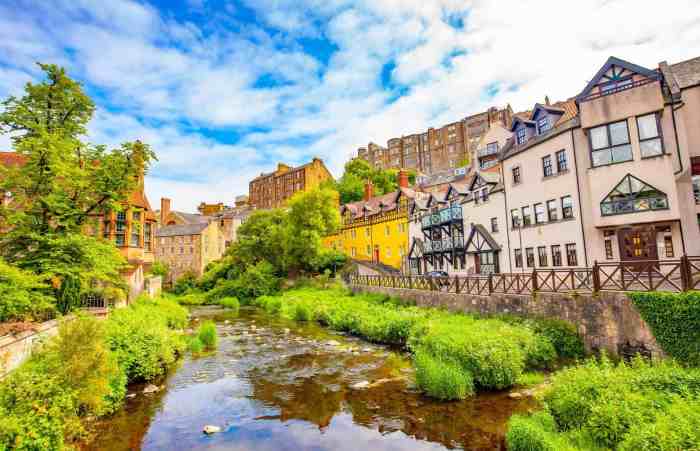
The Scottish Highlands, a region of rugged beauty and rich history, beckon travelers with its breathtaking landscapes, ancient castles, and captivating culture. A land of dramatic mountains, sparkling lochs, and deep glens, the Highlands offer a unique and unforgettable experience.
So, you’re thinking about Scotland? It’s a great choice! With stunning landscapes and rich history, you’ll have no shortage of things to see and do. If you’re looking for a similar vibe with a Mediterranean twist, check out the Top 10 Places To Visit in Corsica.
You’ll find rugged mountains, charming villages, and crystal-clear waters. But, if you’re all about that Scottish charm, get ready to explore castles, lochs, and some seriously epic hiking trails.
The Highlands’ Cultural Significance
The Highlands are not only visually stunning but also hold a profound cultural significance. The region is home to the Gaelic language and its rich traditions, passed down through generations. The Highlands have played a pivotal role in Scottish history, from the Jacobite rebellions to the development of clan systems.
Exploring the Highlands offers a glimpse into Scotland’s past and its enduring spirit.
Exploring the Highlands
A journey through the Highlands is an adventure waiting to happen. Here’s a potential itinerary for exploring the region:
Key Destinations
- Loch Ness:Home to the elusive Loch Ness Monster, this iconic loch is a must-visit. Enjoy a boat trip, explore the surrounding countryside, and immerse yourself in the legend.
- Cairngorms National Park:The largest national park in the UK, the Cairngorms offers a diverse range of landscapes, including mountains, forests, and rivers. Explore the park’s trails, go wildlife spotting, or simply relax and enjoy the views.
- Isle of Skye:A rugged and dramatic island, Skye is known for its dramatic mountains, including the iconic Old Man of Storr. Visit the Fairy Pools, explore the Quiraing, and enjoy the island’s unique charm.
- Glencoe:A valley of breathtaking beauty, Glencoe is a must-see for its dramatic scenery and historic significance. Visit the Glencoe Visitor Centre, explore the surrounding trails, and learn about the tragic Massacre of Glencoe.
Activities
- Hiking and Walking:The Highlands offer a wealth of hiking trails, from easy strolls to challenging mountain ascents. Enjoy breathtaking views and explore the region’s natural beauty.
- Wildlife Watching:The Highlands are home to a variety of wildlife, including red deer, golden eagles, and otters. Take a wildlife tour, go birdwatching, or simply keep an eye out for these magnificent creatures.
- Whisky Tasting:Scotland is renowned for its whisky, and the Highlands are home to some of the country’s finest distilleries. Take a tour, sample different whiskies, and learn about the art of whisky making.
- Castle Exploration:The Highlands are dotted with historic castles, each with its own unique story to tell. Explore these majestic structures, learn about their history, and imagine the lives of those who lived within their walls.
Edinburgh
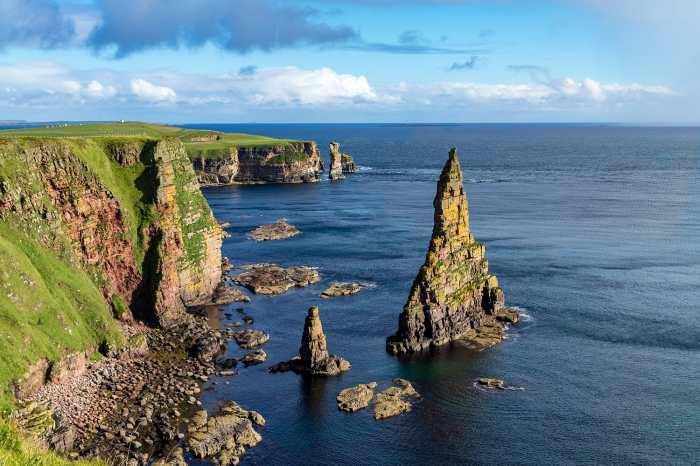
Edinburgh, the capital of Scotland, is a vibrant city steeped in history and culture. From its iconic castle perched atop a volcanic crag to the cobblestone streets of the Royal Mile, Edinburgh offers a captivating blend of ancient charm and modern dynamism.
Historical Landmarks and Attractions
Edinburgh is renowned for its historical landmarks, offering a glimpse into the city’s rich past.
- Edinburgh Castle:This majestic fortress dominates the city skyline and is one of Scotland’s most visited attractions. It has served as a royal residence, a military stronghold, and a prison throughout its history. Visitors can explore the castle’s many historic buildings, including St.
Margaret’s Chapel, the oldest building in Edinburgh, and the Scottish National War Memorial.
- The Royal Mile:This historic thoroughfare runs from Edinburgh Castle to Holyrood Palace and is lined with charming shops, restaurants, and pubs. Visitors can stroll along the Royal Mile, soaking in the atmosphere of this iconic street and exploring its many hidden alleys and courtyards.
- Holyrood Palace:This historic palace is the official residence of the Queen in Scotland. Visitors can tour the state apartments, explore the gardens, and learn about the palace’s fascinating history.
Edinburgh’s Vibrant Cultural Scene
Edinburgh boasts a thriving cultural scene, with a diverse array of festivals, museums, and theaters.
- Edinburgh Fringe Festival:This annual arts festival is one of the largest in the world, featuring a wide range of performances, from theater and dance to comedy and music. The festival attracts thousands of performers and audiences from around the globe.
- Edinburgh International Festival:This prestigious festival showcases the best of international performing arts, with a focus on classical music, opera, and dance.
- The National Museum of Scotland:This museum houses a vast collection of artifacts and exhibits, covering everything from Scottish history and culture to science and technology.
- The Scottish National Gallery:This art museum features a world-class collection of paintings, sculptures, and drawings, from the Renaissance to the present day.
Experiencing Edinburgh’s Nightlife and Culinary Delights
Edinburgh offers a vibrant nightlife scene, with a wide range of pubs, clubs, and live music venues.
- The Grassmarket:This historic square is a popular spot for nightlife, with a lively mix of pubs, bars, and restaurants.
- George Street:This elegant street is home to a variety of upscale bars and clubs, offering a more sophisticated nightlife experience.
- The Old Town:This historic district is full of traditional pubs, many of which have been serving drinks for centuries.
Edinburgh is also known for its delicious cuisine, with a variety of restaurants offering everything from traditional Scottish fare to international cuisine.
- Haggis, neeps, and tatties:This traditional Scottish dish is made with sheep’s pluck, mashed turnips, and potatoes.
- Scotch whisky:Scotland is famous for its single malt whiskies, which are enjoyed all over the world.
- Seafood:The city’s location on the coast makes it a great place to enjoy fresh seafood, from fish and chips to oysters and mussels.
Glasgow
Glasgow, Scotland’s largest city, boasts a vibrant cultural scene, a rich musical heritage, and a thriving contemporary art scene. It’s a place where you can experience world-class museums, hear the sounds of iconic bands, and discover the latest in design and innovation.
Museums and Art Galleries
Glasgow is home to some of the most impressive museums and art galleries in the UK. These institutions offer a glimpse into the city’s history, culture, and artistic heritage.
- The Kelvingrove Art Gallery and Museum:This iconic museum is a treasure trove of art, history, and natural history. Its collection spans centuries and includes masterpieces by renowned artists like Van Gogh and Rembrandt. Visitors can explore the museum’s impressive Egyptian collection, the renowned Burrell Collection, and the captivating dinosaur exhibits.
- The Glasgow School of Art:This world-renowned art school is not only a center for education but also a showcase for contemporary art. The Mackintosh Building, designed by the legendary architect Charles Rennie Mackintosh, is a masterpiece of Art Nouveau and a must-see for architecture enthusiasts.
- The Hunterian Museum and Art Gallery:Located on the campus of the University of Glasgow, this museum features a diverse collection of artifacts, including the renowned Hunterian Collection of anatomical specimens, a significant collection of Scottish art, and an impressive collection of Roman artifacts.
- The Gallery of Modern Art (GoMA):This modern art gallery showcases a wide range of contemporary art, from painting and sculpture to photography and video installations. It’s a great place to discover the latest trends in the art world and experience the creativity of contemporary artists.
Musical Heritage
Glasgow has played a pivotal role in the development of rock and pop music, producing some of the most iconic bands in history.
From the rugged Highlands to the charming cities, Scotland has something for everyone. If you’re looking for a unique travel experience, check out the Top 10 Places To Visit in 2024 and see if Scotland makes the cut! Once you’ve made your list, be sure to add in some time to explore the Isle of Skye, a truly magical destination.
- The 1970s and 1980s:This era saw the rise of bands like The Jesus and Mary Chain, The Smiths, and Orange Juice, who pushed the boundaries of indie rock and influenced generations of musicians. These bands, often referred to as “post-punk,” developed a distinctive sound that resonated with a new generation of music lovers.
- The 1990s and Beyond:Glasgow continued to produce groundbreaking music, with bands like Belle & Sebastian, Travis, and Franz Ferdinand gaining international recognition. These bands blended indie rock with pop sensibilities, creating a unique sound that captivated audiences worldwide.
Contemporary Art Scene
Glasgow is a hub for contemporary art, with a thriving scene that encompasses a wide range of disciplines. The city’s art scene is characterized by its experimental nature, its focus on social issues, and its commitment to innovation.
- The Tramway:This contemporary art center is known for its ambitious exhibitions, which often feature challenging and thought-provoking works by emerging and established artists.
- The CCA:The Centre for Contemporary Arts (CCA) is a multidisciplinary arts organization that hosts exhibitions, performances, and events. It’s a platform for artists to experiment with new ideas and engage with the community.
- The Glasgow International Festival of Visual Art:This biennial festival is a celebration of contemporary art, bringing together artists from around the world. The festival features exhibitions, performances, and events across the city, showcasing the latest trends in the art world.
The Isle of Skye
The Isle of Skye, Scotland’s largest island, is a breathtaking landscape of dramatic mountains, cascading waterfalls, and rugged coastlines. Its captivating beauty has earned it the nickname “The Misty Isle,” and its rugged terrain is a testament to its geological history, formed by volcanic eruptions and glacial activity.
Exploring the Isle of Skye
The Isle of Skye offers a range of experiences for travelers, from adventurous hikes to scenic drives. Here are some highlights:
Hiking Trails
- The Old Man of Storr:This iconic rock formation is a must-see on Skye. The hike to the summit offers panoramic views of the surrounding landscape.
- The Quiraing:This unique landscape of jagged cliffs, grassy plateaus, and hidden valleys is a photographer’s paradise.
- The Fairy Pools:These crystal-clear pools, fed by cascading waterfalls, are a popular spot for swimming and enjoying the natural beauty of the island.
Scenic Drives
- The Trotternish Peninsula:This scenic drive offers stunning views of the island’s northern coastline, including the Old Man of Storr and the Quiraing.
- The Skye Ring Road:This circular route takes you around the entire island, allowing you to explore its diverse landscapes.
- The Fairy Pools:This scenic drive takes you to the Fairy Pools, offering breathtaking views of the waterfalls and surrounding mountains.
Wildlife of the Isle of Skye
The Isle of Skye is home to a variety of wildlife, including:
Red Deer
The island’s red deer population is one of the largest in the UK. These majestic creatures can be spotted grazing in the open hillsides or roaming through the forests.
So you’re planning a trip to Scotland, huh? That’s awesome! You’ll want to check out the Highlands, the Isle of Skye, and maybe even Edinburgh. But if you’re looking for something a little different, you might want to check out the Top 10 Places To Visit In Oregon.
Oregon has some pretty epic scenery too, and it’s a lot closer to home for most of us. But hey, if you’re going all the way to Scotland, you’ve got to see Loch Ness! That’s a must-see, no matter what.
Seabirds
The rugged coastline of the Isle of Skye provides a haven for seabirds. Puffins, guillemots, razorbills, and kittiwakes can be seen nesting on the cliffs during the breeding season.
Loch Ness and the Mystery of Nessie
Loch Ness, a vast and deep body of water in the Scottish Highlands, is renowned for its breathtaking beauty and captivating mystery. It’s also home to one of the world’s most famous legends: the Loch Ness Monster, affectionately known as Nessie.
For centuries, stories and sightings of a creature lurking beneath the loch’s surface have captivated imaginations and fueled endless speculation.
The Legend of Nessie
The legend of Nessie dates back to the 6th century, with the earliest written account appearing in the biography of Saint Columba, a missionary who arrived in Scotland in 565 AD. The tale recounts a story of a monster attacking a man in the River Ness, which flows from Loch Ness, and Columba intervening to save the man.
Over the centuries, numerous sightings have been reported, from fleeting glimpses of a long neck and fin to more detailed descriptions of a massive, reptilian creature. These accounts have fueled the myth of Nessie, transforming the Loch Ness Monster into a cultural icon and a major tourist attraction.
Historical and Cultural Significance of Loch Ness
Beyond the mystery of Nessie, Loch Ness holds significant historical and cultural value. The loch played a vital role in the lives of the Picts, a Celtic tribe who inhabited the region in the early centuries AD. The Picts built numerous forts and settlements around the loch, including the impressive ruins of Urquhart Castle, which sits on a dramatic cliff overlooking the water.
The castle, dating back to the 13th century, was a strategic stronghold for centuries and witnessed numerous historical events, including sieges and battles.
The Surrounding Area
The village of Drumnadrochit, situated on the shores of Loch Ness, serves as a gateway to the loch and its mysteries. This charming village offers a range of accommodations, restaurants, and shops, catering to tourists and visitors alike. Drumnadrochit is also home to the Loch Ness Centre and Exhibition, a fascinating museum dedicated to the history, culture, and legend of the loch.
The center features exhibits on the natural history of Loch Ness, the search for Nessie, and the cultural significance of the loch throughout history. From Drumnadrochit, visitors can embark on boat tours of the loch, providing breathtaking views of the surrounding Highlands and the chance to catch a glimpse of Nessie.
The Scottish Borders
The Scottish Borders, a region in the south of Scotland, is a captivating destination for history buffs and nature enthusiasts alike. It boasts a rich tapestry of historical sites, from ancient ruins to majestic castles, and a landscape that is both rugged and serene.
The Borders’ Historical Legacy
The Scottish Borders is a region steeped in history, shaped by centuries of conflict and cultural exchange. This region played a pivotal role in the long-standing rivalry between England and Scotland. The border between the two countries, which runs through the region, was a site of constant conflict for centuries.
As a result, the Borders is dotted with numerous castles, battlefields, and ancient abbeys that tell the story of this tumultuous past.
- The Battle of Flodden: This iconic battle, fought in 1513, saw the English defeat the Scottish army, resulting in the death of King James IV of Scotland. The battle took place on a hill near the village of Flodden, and a monument commemorates the event.
- Kelso Abbey: Founded in the 12th century, Kelso Abbey is a magnificent example of medieval architecture. It was once a powerful religious center, but was destroyed by English forces in the 16th century. The abbey ruins stand as a testament to the region’s rich history.
- Dryburgh Abbey: Another prominent abbey in the Borders, Dryburgh Abbey is the burial place of Sir Walter Scott, the renowned Scottish novelist. The abbey’s ruins are surrounded by beautiful gardens and offer stunning views of the surrounding countryside.
- Hermitage Castle: This imposing fortress, perched atop a craggy hill, was built in the 13th century. It served as a stronghold for the Douglas family, one of the most powerful families in Scotland. Today, the castle is a popular tourist attraction, offering visitors a glimpse into the lives of the medieval nobility.
The Literary Legacy of the Borders
The Scottish Borders has long been a source of inspiration for writers and poets. The region’s dramatic landscape, rich history, and folklore have inspired some of Scotland’s most celebrated literary works.
- Sir Walter Scott: The “Wizard of the North,” Sir Walter Scott, is considered one of the most important figures in Scottish literature. His novels, such as Ivanhoeand Rob Roy, helped to popularize the genre of historical fiction. Scott was born and raised in the Borders, and many of his novels are set in the region.
He is buried at Dryburgh Abbey.
- James Hogg: Known as the “Ettrick Shepherd,” James Hogg was a Scottish poet and novelist. He is best known for his novel The Private Memoirs and Confessions of a Justified Sinner, a dark and unsettling tale of religious fanaticism. Hogg was born in the Borders and drew heavily on local folklore and traditions in his writing.
Unique Cultural Traditions, Top 10 Places To Visit In Scotland
The Scottish Borders has a unique culture that is distinct from other parts of Scotland. The region’s traditions are rooted in its history and landscape.
- Borders Games: These games, held annually in various towns and villages across the Borders, are a celebration of the region’s heritage. The games include traditional events such as tug-of-war, hammer throwing, and the “tossing the caber.”
- Kelso Ram Sale: This annual event, held in Kelso, is a unique spectacle that draws crowds from across the country. The sale features hundreds of rams, which are auctioned off to farmers. The Kelso Ram Sale is a testament to the region’s agricultural heritage.
The Orkney Islands
Escape to the Orkney Islands, a captivating archipelago off the northern coast of Scotland, where ancient history and stunning scenery intertwine. These rugged islands, shaped by the forces of nature, boast a wealth of archaeological treasures, dramatic landscapes, and vibrant wildlife.
Ancient Archaeological Sites
The Orkney Islands are renowned for their well-preserved archaeological sites, offering a glimpse into the lives of prehistoric people.
Skara Brae
Skara Brae is a remarkable Neolithic village, dating back to around 3180 BC. This remarkably preserved settlement, buried beneath a mound of sand for centuries, provides an unparalleled window into the lives of early farmers. The houses, built of stone and earth, feature intricately designed furniture and hearths.
Skara Brae is a UNESCO World Heritage Site, and visitors can explore the excavated village and learn about the daily routines of its inhabitants.
The Ring of Brodgar
The Ring of Brodgar, a massive stone circle, is one of the most impressive prehistoric monuments in the British Isles. Dating back to around 2500 BC, this circular structure is comprised of standing stones arranged in a circle, with a diameter of around 100 meters.
The Ring of Brodgar is thought to have been a ceremonial site, perhaps used for rituals or astronomical observations. The site offers stunning views of the surrounding landscape and provides a powerful connection to the past.
Unique Wildlife
The Orkney Islands are a haven for wildlife, with a diverse range of species inhabiting the islands’ rugged shores, dramatic cliffs, and rolling hills.
Seabirds
The islands are home to a vast array of seabirds, including puffins, gannets, razorbills, and guillemots. The dramatic cliffs of the islands provide ideal nesting grounds for these birds, and visitors can witness their incredible aerial displays.
Seals
Grey seals are a common sight on the Orkney Islands, with large colonies inhabiting the islands’ shores. These playful creatures can often be seen basking on the rocks or swimming in the surrounding waters.
Dolphins
Bottlenose dolphins are frequent visitors to the waters around the Orkney Islands, and visitors can often spot them swimming alongside boats or leaping out of the water.
Exploring the Orkney Islands
The Orkney Islands offer a wealth of opportunities for exploration, from island hopping to boat trips and walking trails.
Island Hopping
The Orkney Islands are easily explored by car, and visitors can enjoy the freedom of hopping between the different islands. The main island, Mainland, is home to most of the islands’ attractions, but the smaller islands offer a unique experience.
Boat Trips
Boat trips offer a fantastic way to experience the Orkney Islands’ coastline and wildlife. Visitors can choose from a variety of trips, including wildlife tours, seal safaris, and historical boat trips.
Walking Trails
The Orkney Islands are crisscrossed with walking trails, offering stunning views of the islands’ landscapes. Visitors can choose from short walks to longer hikes, exploring the islands’ dramatic cliffs, rolling hills, and sandy beaches.
The Shetland Islands

Escape to the remote beauty of the Shetland Islands, a captivating archipelago located north of the Scottish mainland. These rugged islands, steeped in Viking history and breathtaking natural wonders, offer a unique and unforgettable travel experience.
Viking Heritage and Traditions
The Shetland Islands boast a rich Viking heritage, evident in their language, culture, and historical sites. The islands were settled by Norse Vikings in the 9th century, and their influence is still palpable today.
- Old Norse Language:The Shetland dialect of Scots, known as “Shetlandic,” retains many words and phrases from Old Norse, a testament to the Vikings’ lasting legacy.
- Viking Sites:Numerous archaeological sites on the islands offer glimpses into their Viking past. The Broch of Clickimin, a prehistoric stone tower, stands as a testament to the ingenuity of early settlers. The remains of Viking longhouses and burial mounds provide further evidence of their presence.
- Traditional Festivals:Shetland’s Viking heritage is celebrated through festivals like the Up Helly Aa, a fire festival held annually in Lerwick, the islands’ main town. The festival features a dramatic torchlit procession and the burning of a Viking longship, a spectacle that draws visitors from around the world.
Stunning Landscapes
The Shetland Islands are renowned for their dramatic landscapes, a symphony of rugged coastlines, dramatic cliffs, and picturesque villages.
- Rugged Coastline:The islands’ coastline is characterized by towering cliffs, hidden coves, and sandy beaches. The dramatic cliffs of Hermaness National Nature Reserve offer stunning views of the Atlantic Ocean and the surrounding islands.
- Dramatic Cliffs:The cliffs of Foula, the most westerly island in Shetland, rise dramatically from the sea, creating a breathtaking spectacle. The sheer cliffs of Mousa, home to the best-preserved broch in Scotland, are equally impressive.
- Picturesque Villages:The Shetland Islands are dotted with charming villages, each with its own unique character. The historic town of Lerwick, with its colorful harbor and bustling shops, is a must-visit. The quaint villages of Scalloway and Sandwick offer a glimpse into the islands’ traditional way of life.
Unique Wildlife
The Shetland Islands are a haven for wildlife, attracting a diverse range of species.
- Puffins:The islands are a prime breeding ground for puffins, with thousands of these colorful seabirds nesting on the cliffs during the summer months.
- Otters:The Shetland Islands are home to a thriving otter population. These playful creatures can be spotted along the coastlines and in the islands’ many lochs.
- Whales:The waters around the Shetland Islands are a popular feeding ground for whales, including minke whales, orcas, and humpback whales. Whale watching tours are a popular activity, offering visitors the chance to witness these magnificent creatures in their natural habitat.
The Cairngorms National Park
The Cairngorms National Park, a vast expanse of wilderness in the heart of Scotland, offers a breathtaking escape into nature. Its dramatic landscapes, diverse wildlife, and abundant outdoor activities make it a must-visit destination for adventure seekers and nature enthusiasts alike.
The Cairngorms’ Diverse Landscapes
The Cairngorms National Park is a tapestry of contrasting landscapes, each with its own unique charm. The park is home to the UK’s highest mountains, including Ben Macdui, the second highest peak in the British Isles. These majestic mountains rise above rolling hills, lush forests, and shimmering lochs, creating a breathtaking panorama.
The park’s forests, dominated by Scots pine, provide a haven for wildlife and offer opportunities for tranquil walks and invigorating hikes. The park’s lochs, such as Loch Morlich and Loch Insh, are perfect for swimming, kayaking, and simply soaking up the tranquility of the surroundings.
Wildlife in the Cairngorms
The Cairngorms National Park is a haven for a diverse array of wildlife. Red squirrels, with their distinctive bushy tails, scamper through the forests, while golden eagles soar high above the peaks, their piercing cries echoing across the valleys. Red deer, majestic and powerful, roam the open moorlands, their antlers a symbol of the park’s wild beauty.
Other notable residents include otters, which frolic in the rivers and lochs, and mountain hares, which change their fur color from brown to white in winter, blending seamlessly with the snowy landscape.
Exploring the Cairngorms
The Cairngorms National Park offers a plethora of activities for all interests and abilities.
Hiking
The park’s extensive network of trails caters to hikers of all levels. From gentle strolls through ancient forests to challenging ascents to the mountain summits, there’s a route for everyone. Popular hiking destinations include the summit of Ben Macdui, the challenging but rewarding ascent of Cairn Gorm, and the scenic trails around Loch Morlich.
Skiing
The Cairngorms are a popular destination for winter sports enthusiasts. The park’s high altitude and reliable snowfall provide excellent conditions for skiing, snowboarding, and snowshoeing. The main ski resorts, Cairngorm Mountain and Glenshee, offer a variety of slopes and facilities for all abilities.
Wildlife Watching
The Cairngorms National Park is a prime location for wildlife watching. The best time to spot red deer is during the rutting season in autumn, when the stags clash antlers in a spectacular display of power. Golden eagles can be seen soaring above the peaks, while red squirrels can be spotted scampering through the trees.
The Scottish Whisky Trail: A Journey Through Taste
A journey through Scotland isn’t complete without experiencing the soul of the nation: its whisky. Scotch whisky, a spirit revered worldwide, has a rich history and a tradition that dates back centuries. The art of distilling has been passed down through generations, shaping the unique flavors and aromas that define this iconic drink.
Whisky Distilleries in Scotland: A Taste of History
Scotland is home to numerous distilleries, each with its own story and distinct character. Here are some of the top whisky distilleries to explore on your Scottish adventure:
- The Macallan Distillery (Speyside):Known for its rich, complex, and fruity whiskies, The Macallan is a name synonymous with quality. Its unique stills and the use of sherry-seasoned oak casks contribute to its distinctive flavor profile. Visitors can explore the distillery, learn about the whisky-making process, and indulge in a tasting experience.
- Glenfiddich Distillery (Speyside):The “Valley of the Deer” is home to Glenfiddich, a distillery renowned for its smooth, approachable whiskies. Its innovative spirit is reflected in its diverse range of single malts, including the 12-year-old, 15-year-old, and 18-year-old expressions. The distillery offers tours, tastings, and the opportunity to learn about its sustainable practices.
- Glenmorangie Distillery (Highlands):Located in the Scottish Highlands, Glenmorangie is known for its elegant, complex whiskies. Its signature “tall stills” create a lighter, more delicate spirit. The distillery offers tours and tastings, as well as a unique experience at the “Glenmorangie House,” a 19th-century mansion that showcases the brand’s heritage.
- Bowmore Distillery (Islay):Islay is famous for its peaty whiskies, and Bowmore is one of its most iconic distilleries. Its proximity to the sea and the use of peat-smoked barley give its whiskies a distinctive smoky character. Visitors can explore the distillery, learn about the history of Islay whisky, and enjoy a tasting session.
- Highland Park Distillery (Orkney):Situated on the Orkney Islands, Highland Park is the most northerly distillery in Scotland. Its unique location and use of locally-sourced barley create a whisky with a distinct, earthy flavor. Visitors can explore the distillery, learn about the history of Orkney whisky, and enjoy a tasting experience.
Whisky Regions of Scotland: Exploring Regional Flavors
Scotland’s whisky regions each boast distinct characteristics, influenced by factors like water sources, climate, and the types of barley used. These regional differences contribute to the diverse range of flavors found in Scotch whisky.
- Speyside:The heartland of Scotch whisky, Speyside is known for its diverse range of styles, from fruity and floral to spicy and complex. Popular distilleries in this region include The Macallan, Glenfiddich, Glenlivet, and Aberlour.
- Highlands:The Highlands offer a diverse range of whisky styles, from light and floral to robust and peaty. Notable distilleries in this region include Glenmorangie, Dalwhinnie, and Oban.
- Islay:Islay is famous for its heavily peated whiskies, known for their smoky, medicinal, and maritime notes. Iconic distilleries in this region include Laphroaig, Ardbeg, Lagavulin, and Bowmore.
- Lowlands:The Lowlands produce lighter, smoother whiskies, often with a hint of sweetness. Popular distilleries in this region include Auchentoshan, Glenkinchie, and Bladnoch.
- Campbeltown:Campbeltown is a small region known for its peaty and complex whiskies. Notable distilleries in this region include Springbank, Glengyle, and Longrow.
- Islands:The Islands of Scotland produce a variety of whisky styles, influenced by the unique terroir of each island. Popular distilleries in this region include Highland Park (Orkney), Talisker (Skye), and Jura (Jura).
Last Recap

So, pack your bags, grab your camera, and get ready for an unforgettable adventure through Scotland. From the dramatic landscapes of the Isle of Skye to the ancient ruins of Skara Brae, from the vibrant cultural scene of Edinburgh to the breathtaking beauty of the Cairngorms National Park, Scotland promises an experience that will stay with you long after you’ve left its shores.
So, what are you waiting for? Start planning your Scottish adventure today!
FAQ Explained: Top 10 Places To Visit In Scotland
What’s the best time to visit Scotland?
The best time to visit Scotland depends on your interests. For mild weather and outdoor activities, spring (April-May) and autumn (September-October) are ideal. Summer (June-August) is peak season, with long daylight hours and plenty of festivals, but it can get crowded.
Winter (November-March) offers stunning snow-capped landscapes but can be cold and wet.
How much does a trip to Scotland cost?
The cost of a trip to Scotland varies greatly depending on your travel style, accommodation choices, and activities. Budget travelers can get by on around $100 per day, while luxury travelers can spend upwards of $500 per day.
What are the best ways to get around Scotland?
Scotland has a well-developed public transportation system, including trains, buses, and ferries. For greater flexibility, consider renting a car, especially if you plan to explore the Highlands or remote islands.
Is Scotland safe for solo travelers?
Scotland is generally considered a safe country for solo travelers. However, it’s always a good idea to be aware of your surroundings and take precautions, especially in large cities.


